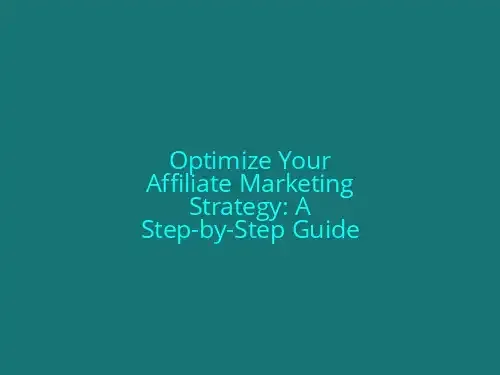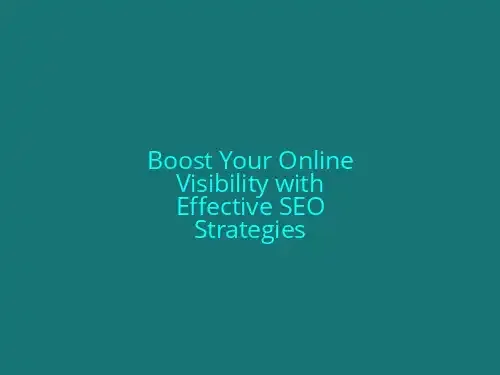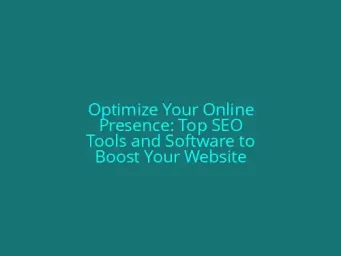
Mobile Marketing: Boosting Your Online Visibility
### 1. Introduction to Mobile Marketing\nMobile marketing is crucial in todays digital landscape. Heres a brief overview of its importance:\n- **Why Mobile Marketing Matters**: Mobile marketing is essential because it is necessary. Customers are already using their smartphones to view paid ads and branded content. Forgetting mobile marketing means missing out on potential attention during the 4 hours and 25 minutes the average American spends on their phone.\n- **How Mobile Marketing Differs from Traditional Marketing**: Mobile marketing is distinct from traditional marketing. Smartphones offer a unique platform for businesses to reach customers specifically. Mobile marketing allows for geographic targeting, personalization, and integration with offline media like QR codes.\n- **Importance of Optimizing for Mobile Devices**: Majority of web traffic comes from mobile devices. Optimizing for mobile ensures that your business reaches a broader audience. Mobile marketing strategies are designed to cater to the increasing trend of mobile searches, which has stabilized around 52-54% for the last few years.\nBy understanding the significance of mobile marketing and its differences from traditional marketing, businesses can effectively adapt and optimize for mobile devices. This includes integrating mobile marketing into their overall digital strategy to maximize visibility and engagement.\n---\nPlease let me know if you would like me to proceed further or make any changes.### 2. The Role of Mobile in SEO and Social Media\nThe ever-blurring lines between search engines and social media platforms have significant implications for marketers. This section delves into the correlation between social media and search rankings, highlighting the importance of integrating mobile marketing strategies into SEO and social media campaigns.\n#### The Correlation Between Social Media and Search Rankings\nSearch engines and social media platforms have different purposes, but they both share the common goal of connecting users with relevant content. Social media is now preferred by many users to find brands and products, rather than traditional search engines. This shift has significant implications for marketers, who must adapt their strategies to reach users on both platforms.\n#### Using Keyword Marketing for SEO and Social Media Campaigns\nKeyword marketing plays a critical role in both SEO and social media campaigns. By leveraging keywords strategically, you can optimize your content for both search engines and social media platforms. This involves identifying relevant keywords for your business and using them consistently across all digital marketing channels.\n#### Importance of Quality Content in Retaining Visitors\nQuality content is essential for retaining visitors on both search engines and social media platforms. High-quality content not only keeps users engaged but also builds credibility and trust with your audience. By creating content that resonates with your target audience, you can drive more traffic and conversions on both platforms.\nIn this section, we have discussed how mobile marketing can enhance SEO and social media efforts. By integrating mobile marketing strategies into your digital marketing plan, you can reach a broader audience and drive more conversions. The next section will explore mobile-specific SEO strategies and how to conduct mobile keyword research effectively.### 3. Mobile-Specific SEO Strategies\n1. **Conducting Mobile Keyword Research**:\n - Mobile users search differently than desktop users, so its crucial to understand what mobile users are looking for. Use tools like Google Keyword Planner to identify relevant keywords and phrases.\n - Identify the most common searches related to your business and target those keywords in your content.\n2. **Optimizing Titles and Meta Descriptions for Mobile Search**:\n - Mobile users scan search results quickly, so its crucial to have clear and concise titles that grab their attention.\n - Use descriptive and optimized meta descriptions to give users a summary of your content. This will improve the chances of your page being clicked.\n3. **The Role of Google My Business Listing and Local SEO**:\n - A Google My Business listing helps your business appear in local search results, making it essential to optimize it.\n - Ensure your listing includes accurate and up-to-date information, such as your business hours, address, and contact details.\n - Claim and optimize your listing to improve your local search rankings and be more visible to mobile users.\nThese strategies are crucial for optimizing your site for mobile devices and ensuring that your business appears in relevant search results. By following these best practices, you can increase your online visibility and drive more traffic to your website.### 4. Mobile Content Optimization\nMobile content optimization is crucial in todays digital landscape. Here are some strategies to improve your mobile content:\n1. **Appealing Headlines**: Craft headlines that grab the attention of mobile users. Keep them short, concise, and visually appealing to ensure they stand out on smaller screens.\n2. **LSI Keywords**: Incorporate Latent Semantic Indexing (LSI) keywords to provide context and relevance to your content. Use tools like Google Keyword Planner, LSIGraph, and SEMrush to identify relevant LSI keywords. This will enhance search engine comprehension and improve your ranking.\n3. **Keyword Intent**: Optimize your content for keyword intent. Understand what users are looking for and tailor your content to meet their needs. This includes using long-tail keywords specific to your niche and aligning with user intent.\n4. **Building Inbound Links**: Develop high-quality, relevant content that attracts inbound links. This increases your authority and credibility, which search engines consider when ranking sites.\nBy implementing these strategies, you can significantly improve your mobile content and enhance the overall user experience. This includes ensuring fast page load speeds, optimizing for voice search, and creating content that is both mobile-friendly and readable.
read more →
Boost Your Online Presence with Effective Digital Advertising Strategies
**Why Digital Advertising Matters in Today’s Digital Landscape**\nIn today’s digital age, digital advertising has become a crucial aspect of any marketing strategy. With the rise of online searches and social media, businesses must adapt to the evolving advertising landscape to effectively reach their target audience and stay ahead of the competition. Digital advertising offers numerous benefits, including the ability to target specific demographics, interests, and behaviors, increasing brand awareness, and driving conversions.\nThe importance of digital advertising cannot be overstated. It provides a platform for businesses to communicate their brand message and establish a strong online presence. By leveraging various digital advertising platforms, such as Google Ads and Facebook Ads, companies can reach their target audience and maximize their return on investment (ROI). Digital advertising also offers real-time analytics, allowing marketers to track the effectiveness of their campaigns and make data-driven decisions.\nAs the advertising landscape continues to evolve, it is essential for businesses to stay up-to-date with the latest trends, tools, and best practices. By doing so, they can ensure their digital advertising campaigns remain effective and drive meaningful results. In the following sections, we will delve deeper into the world of digital advertising, exploring strategies for targeting the right audience, crafting compelling ad copy, and measuring the success of your campaigns.### Section 2: Understanding Digital Advertising\n#### What is Digital Advertising and How Does it Work?\nDigital advertising, also known as online advertising, is a crucial component of any modern marketing strategy. It involves using various digital channels to reach and engage with your target audience, ultimately driving conversions and sales. Digital advertising can take many forms, including search engine marketing, social media advertising, email marketing, and more.\n#### Overview of Digital Advertising Platforms\nThere are several platforms where you can advertise digitally, each with its strengths and weaknesses. Google Ads, for example, allows you to target users based on their search queries, while Facebook Ads and LinkedIn Ads enable you to target users based on their demographics, interests, and behaviors. Each platform offers various ad formats, such as text ads, image ads, and video ads, to help you achieve your goals.\nUnderstanding how these platforms work and how to use them effectively is crucial for any digital advertising campaign. By leveraging the right tools and strategies, you can create targeted ad campaigns that reach the right audience, increase brand awareness, and drive conversions.\n#### Importance of Targeting the Right Audience\nOne of the most critical aspects of digital advertising is targeting the right audience. This involves understanding your target audiences demographics, interests, behaviors, and other factors that influence their purchasing decisions. By targeting the right audience, you can ensure that your ads are seen by people who are most likely to be interested in your product or service.\n#### Tips for Crafting Compelling Ad Copy\nCrafting compelling ad copy is essential for any successful digital advertising campaign. Ad copy should be clear, concise, and attention-grabbing, highlighting the unique benefits and value proposition of your product or service. Here are a few tips for writing effective ad copy:\n- **Focus on the benefits**: Instead of listing features, focus on the benefits your product or service offers to the customer.\n- **Use attention-grabbing headlines**: Use headlines that stand out and grab the readers attention.\n- **Keep it simple**: Avoid using complex language or jargon that could confuse or intimidate your audience.\n- **Use compelling visuals**: Use high-quality images, videos, or other visuals to make your ad stand out.\nBy following these tips, you can create ad copy that resonates with your target audience and drives conversions.\n### Keywords to Include:\n- Digital advertising\n- Online presence\n- Advertising campaigns\n- Target audience\n- Ad copy\n- Analytics tools\n- ROI\n- Conversion rates**Proven Strategies for Effective Digital Advertising**\nDigital advertising is a crucial aspect of any marketing strategy. To get the most out of your campaigns, you need to have a solid understanding of the strategies involved. One of the most critical elements of successful digital advertising is targeting the right audience. This includes using demographics and interests to ensure that your ads are seen by those who are most likely to be interested in your product or service.\nCrafting compelling ad copy is also essential. Your ad copy should be clear, concise, and persuasive. It should communicate the value of your product or service and entice users to click on your ad. Here are some tips for writing ad copy that converts:\n1. **Use Attention-Grabbing Headlines**: Your headline should be attention-grabbing and relevant to your target audience. It should clearly communicate the key benefit of your product or service.\n2. **Keep it Simple and Straightforward**: Your ad copy should be simple and easy to understand. Avoid using jargon or overly technical language that might confuse your audience.\n3. **Highlight the Unique Selling Point**: Identify what sets your product or service apart from the competition and highlight this in your ad copy.\n4. **Use Social Proof**: Include customer testimonials, reviews, or ratings to build trust and credibility with your audience.\n5. **Use Visuals**: Incorporate high-quality images or videos to break up the text and make your ad more engaging.\nBy following these tips, you can create ad copy that effectively communicates your message and drives conversions. Additionally, continually monitoring and optimizing your campaigns using analytics tools can help you refine your strategies and improve your ROI.\nBy understanding your target audience, crafting compelling ad copy, and using analytics tools, you can create an effective digital advertising strategy that drives real results for your business.### How to Measure the Success of Your Digital Advertising Campaign\n#### How to Measure the Success of Your Digital Advertising Campaign\n**Measuring Success with Digital Advertising**\nIn today’s digital landscape, it is crucial to measure the success of your digital advertising campaigns to optimize and refine your strategies. Digital advertising involves various metrics and key performance indicators (KPIs) that help you understand the effectiveness of your efforts.\n**Using KPIs to Track Success**\nTo measure the success of your campaign, you need to track relevant metrics. Key metrics include Return on Investment (ROI) and Conversion Rates. ROI measures the revenue generated for every dollar spent on ads, while Conversion Rates measure the number of visitors who take a desired action. Tracking these metrics helps you understand how well your ads are performing and where adjustments are needed.\n**ROI and Conversion Rates**\nROI (Return on Investment) and Conversion Rates are essential metrics to track when measuring the success of your campaign. ROI shows how much revenue you generate for every dollar spent on ads. For example, if you spend $2,500 on a paid search campaign that brings in $10,000 in sales, that’s a $7,500 return or 300% ROI. This metric helps you identify which campaigns are generating the highest returns.\nConversion Rates, on the other hand, measure the percentage of visitors who take a desired action. For instance, if your campaign generates 1,000 new website visitors and 100 of those visitors complete a specific target action (e.g., filling out a form), that results in a 10% conversion rate.\n**Using Analytics Tools**\nAnalytics tools are essential for optimizing your campaigns. These tools provide real-time data on your ad performance, allowing you to make adjustments and improve results. Google Analytics is a popular tool used to track website traffic, engagement, and conversion rates. It helps you understand where visitors are coming from, how they navigate your site, and what actions they take.\n**Setting Benchmarks and Tracking Progress**\nTo measure success, set benchmarks before launching your campaign. This helps you gauge progress and adjust your strategies accordingly. Regularly tracking KPIs and adjusting your campaigns will maximize your ROI and ensure effective advertising.\nBy understanding and tracking these metrics, you can refine your digital advertising strategies to drive better results and enhance your online presence.
read more →
Optimize Your Affiliate Marketing Strategy: A Step-by-Step Guide
**Keyword Research**\nKeyword research is the foundation of creating a comprehensive SEO-optimized article outline for affiliate marketing. Here are the steps to follow:\n1. **Tools**: Utilize tools like KWFinder, SEMrush, or Ahrefs to find the best keywords related to Affiliate Marketing. These tools help analyze search volume, competition, and potential variations.\n2. **Analysis**: Analyze the search volume and competition for each keyword. This helps in identifying the most relevant and high-traffic keywords.\n3. **Filtering**: Filter the results to focus on long-tail keywords with lower competition. Long-tail keywords are more specific and less competitive, making them easier to rank for.\n4. **Target Keywords**: Identify the top keywords and create a list of target keywords. These keywords will be used strategically throughout the content to improve search engine rankings.\nBy following these steps, you can create a well-researched and optimized keyword list to guide your article outline.**Create Headers and Subheadings**\nIn the process of creating a comprehensive outline for affiliate marketing, it is crucial to break your content into manageable sections using headers and subheadings. This helps structure your content and includes your target keywords effectively. Use headers such as H2, H2, and H3 to organize your content. This not only enhances readability but also makes it easier for readers to quickly find specific information.\nFor example, you can use headers like:\n- **What is Affiliate Marketing?**\n - **Why is Affiliate Marketing Important?**\n - **How to Get Started with Affiliate Marketing**\n - **Tips for Successful Affiliate Marketing**\n - **Common Mistakes to Avoid in Affiliate Marketing**\nThis step helps in focusing your content and making it more user-friendly, ensuring that your target audience can easily locate the relevant information they need. By structuring your content with headers and subheadings, you can effectively include your target keywords and enhance the overall readability of your content.**Section 3: Content Outline**\nTo create a comprehensive outline for your article on Affiliate Marketing, use tools like ChatGPT to generate a detailed structure. This outline should cover the essential topics and subtopics related to affiliate marketing, including:\n- **Definition of Affiliate Marketing**: Explain what affiliate marketing is, its history, and how it works.\n- **Importance of Affiliate Marketing**: Discuss the benefits of affiliate marketing, such as cost-effective marketing, increased sales, and targeted audience reach.\n- **Practical Steps in Affiliate Marketing**:\n - **Choosing a Niche**: Provide guidance on selecting a profitable niche, researching popular trends, and identifying target audiences.\n - **Selecting Affiliate Programs**: Offer tips on choosing reputable affiliate programs, understanding commission structures, and optimizing for conversions.\n - **Content Creation**: Share strategies for creating engaging content, including product reviews, tutorials, and blog posts.\n - **Marketing and Promotion**: Discuss various marketing methods, such as social media, email marketing, and paid advertising.\n - **Tracking and Optimization**: Explain how to monitor and improve affiliate marketing efforts using analytics tools and performance metrics.\n- **Challenges and Solutions in Affiliate Marketing**:\n - **Common Obstacles**: Address common issues faced by affiliate marketers, such as low conversion rates, high competition, and maintaining credibility.\n - **Overcoming Obstacles**: Offer advice on how to overcome these challenges, including diversifying affiliate programs, investing in high-quality content, and building a loyal audience.\n- **Advanced Affiliate Marketing Strategies**:\n - **Scaling Affiliate Marketing**: Share tips on scaling affiliate marketing efforts, including leveraging automation tools, outsourcing tasks, and expanding to new platforms.\n - **Creating a Successful Affiliate Marketing Website**: Provide guidance on building a profitable affiliate marketing website, including choosing a domain, designing a user-friendly interface, and optimizing for search engines.\n- **Conclusion and Future Directions**:\n - **Summary of Key Points**: Recap the essential points covered in the article.\n - **Future of Affiliate Marketing**: Discuss emerging trends and innovations in affiliate marketing, such as the rise of AI-powered tools, voice search optimization, and influencer marketing.\nBy following this comprehensive outline, you can create a well-structured and informative article that effectively covers the key aspects of affiliate marketing and its applications.**4. Include Target Keywords:**\nTo include target keywords in your content strategically, follow these steps:\n- **Use keyword research tools:** Utilize tools like KWFinder, SEMrush, or Ahrefs to identify the best keywords related to Affiliate Marketing and analyze their search volume, competition, and potential variations.\n- **Filter long-tail keywords:** Filter your results to focus on long-tail keywords with lower competition, which can help you stand out in search results while targeting high search volume keywords.\n- **Include target keywords:** Use your target keywords strategically throughout the content, focusing on high search volume and low competition keywords.\n- **Use variations and synonyms:** Incorporate variations and synonyms of your target keywords to avoid repetition and maintain readability.\n- **Make sure keywords are naturally included:** Ensure that your target keywords are naturally included in the content, avoiding over-optimization.\n- **Use keyword density guidelines:** Respect keyword density guidelines to avoid over-optimization, which can lead to penalties from search engines.\nBy following these steps, you can effectively include target keywords in your content while maintaining readability and avoiding penalties from search engines.
read more →
Boost Your Online Visibility with Effective SEO Strategies
**Article Outline: Section 1 - Introduction and Importance of SEO**\n### Title: Understanding and Improving Your Online Visibility through SEO\n### Meta Description:\nDiscover the power of Search Engine Optimization (SEO) and learn how it can boost your online presence. This article explains the basics of SEO, its importance in digital marketing, and provides tips to optimize your content for better search rankings.\n### Headings\n1. **Introduction**\n - **Definition of SEO**: Brief explanation of what SEO is.\n - **Importance of SEO in Digital Marketing**: Discuss how SEO helps increase online visibility, drive targeted traffic, and improve conversion rates.\n### Content\n1. **Introduction**\n SEO is a crucial aspect of digital marketing that helps increase a websites visibility and ranking in search engine results pages (SERPs). With millions of websites online, SEO helps you stand out and reach your target audience effectively. In this article, we will explore the basics of SEO, its importance, and provide actionable tips to optimize your content for better search rankings.\nThis section sets the stage for the rest of the article, introducing readers to the world of SEO and its significance in digital marketing. By focusing on the definition and importance of SEO, it lays the groundwork for readers to understand the value of optimizing their website for search engines.**How Search Engines Work**\nSearch engines are the gatekeepers of the internet, and understanding how they work is crucial for any digital marketer. Here’s a detailed explanation:\n### Crawling and Indexing\n1. **Search Engines Use Software Programs (Crawlers or Spiders)**: Search engines like Google use software programs to crawl the web, discovering new pages and updating existing ones in their massive index. These crawlers are called spiders because they continuously move through the web, indexing new content and updating existing ones.\n2. **Indexing**: This is the process of storing and organizing crawled data in a massive database called an index. The index helps search engines quickly retrieve relevant information when users search for specific terms. This helps ensure accurate and timely results.\n### Algorithmic Rankings\n1. **Complex Algorithms**: Search engines use complex algorithms to rank websites in search engine results pages (SERPs) based on relevance, authority, and other factors. These algorithms assess multiple factors, including keyword usage, page structure, and link popularity, to determine the most relevant results.\n2. **Ranking Factors**: The algorithm evaluates various ranking factors, such as:\n - **Keyword Usage**: How well the content matches the search query.\n - **Link Popularity**: The number and quality of backlinks pointing to a page.\n - **Page Structure**: How well organized and structured the content is.\n - **Content Quality**: The value and relevance of the content to the user.\nThis intricate process helps search engines deliver high-quality results that match the user’s intent, leading to a more satisfying online experience.\n### Summary\nUnderstanding how search engines work is vital for effective SEO. By grasping the intricacies of crawling, indexing, and algorithmic rankings, you can optimize your content for better search engine visibility and improve your online presence.\n---\n### References Beomniscient - How to Write an SEO Content Outline HubSpot - The Ultimate Guide to On-Page SEO### 3. **Benefits of SEO**\n1. **Increased Online Visibility**\nSEO helps your website appear in search results, making it more visible to potential customers. This visibility is critical in today’s digital landscape where users rely heavily on search engines to find information. By optimizing your website for search engines, you increase its visibility and reach a wider audience.\n2. **Targeted Traffic**\nBy optimizing for specific keywords, you attract relevant traffic that is more likely to convert. Targeted traffic means that users searching for specific terms are directed to your content, increasing the chances of engagement and conversion.\n3. **Cost-Effectiveness**\nSEO is a long-term strategy that can save you money compared to paid advertising. While paid ads can provide immediate results, SEO focuses on organic rankings, providing sustainable growth and long-term benefits.\n### Conclusion\nIn summary, SEO is a vital component of digital marketing that helps increase online visibility, drive targeted traffic, and improve conversion rates. By understanding how search engines work, using effective SEO techniques, and following best practices, you can improve your website’s search engine rankings and stay ahead of the competition.**SEO Techniques**\n-----------------\n### **Keyword Research**\n-------------------------\nKeyword research involves identifying relevant and high-traffic keywords that your target audience uses to search for your content. This is crucial for optimizing your content and improving search engine rankings. Here are some tips for effective keyword research:\n1. **Use Long-Tail Keywords**: Target specific keywords with lower competition and higher conversion rates by using long-tail keywords.\n2. **Analyze Competitors**: Research your competitors keywords and content to identify gaps and opportunities in the market.\n3. **Use Keyword Research Tools**: Utilize tools like Google Keyword Planner, Ahrefs, and SEMrush to find and analyze keywords.\n### **On-Page Optimization**\n----------------------------\nOn-page optimization involves optimizing your websites page elements to improve search engine rankings. Here are some key strategies:\n1. **Title Tags**: Use descriptive and relevant title tags for each page to help search engines understand your content.\n2. **Meta Descriptions**: Write compelling meta descriptions that summarize your pages content and encourage users to click through.\n3. **Header Tags**: Organize content with header tags (H2, H2, H3, etc.) to improve readability and structure.\n4. **Content Quality**: Focus on high-quality, engaging, and informative content that resonates with your audience.\n5. **Internal and External Linking**: Use links to connect relevant pages on your website and to external sources to improve authority and relevance.\n### **Off-Page Optimization**\n------------------------------\nOff-page optimization involves building backlinks from authoritative sites to increase your website’s authority and ranking. Here are some strategies:\n1. **Guest Blogging**: Write guest posts for other websites to build backlinks and increase your authority.\n2. **Link Building**: Build links by collaborating with influencers, participating in online communities, and creating high-quality content.\n3. **Broken Link Building**: Identify broken links on other sites and offer to replace them with working links to your own site.\n### **Technical SEO**\n----------------------\nTechnical SEO involves optimizing website technicalities to improve search engine crawling and indexing. Here are some key strategies:\n1. **Page Speed**: Ensure your website loads quickly by optimizing images, compressing files, and leveraging browser caching.\n2. **Mobile Responsiveness**: Ensure your website is mobile-friendly and responsive to improve user experience and search engine rankings.\n3. **XML Sitemaps**: Create and submit XML sitemaps to help search engines understand your website’s structure and content.\n4. **SSL Certificates**: Install SSL certificates to secure your website and boost search engine trust.\nBy incorporating these SEO techniques into your digital marketing strategy, you can improve your websites visibility, drive targeted traffic, and enhance conversion rates.
read more →

